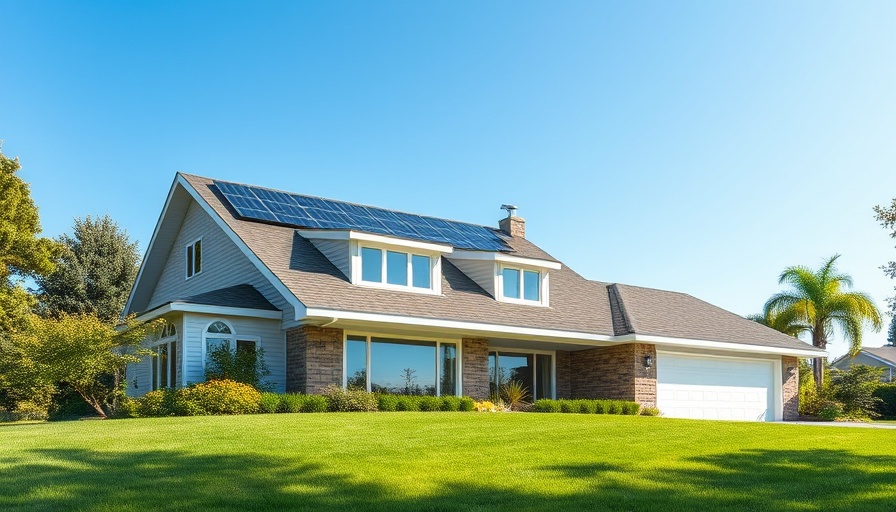
Unlocking Savings: The Power of Energy-Efficient Roofing
As homeowners face rising energy bills, understanding energy-efficient roofing options has become crucial. Not only do these roofs save money, but they also enhance comfort and contribute positively to environmental sustainability. Selecting the right roofing material, understanding its insulation properties, and collaborating with reliable roofing professionals can make a significant impact on your household expenses.
The Role of Cool Roof Coatings
Cool roof coatings are innovative materials designed to reflect sunlight and reduce heat absorption, making them an excellent choice for energy efficiency. These reflective coatings can be applied to various roof types, including asphalt, metal, and tile, helping to maintain lower indoor temperatures. By doing so, homeowners can reduce their energy consumption drastically, leading to lower utility bills and an extended lifespan for the roof.
Metal Roofing: A Durable Choice
Metal roofs are emerging as a preferred option for energy-conscious homeowners, thanks to their remarkable reflective properties. By reducing heat absorption by up to 30%, these roofs stay cooler in summer months, translating to reduced air conditioning costs. Furthermore, metal roofing offers the added benefits of being lightweight and recyclable, all while providing long-term durability. Coupled with insulation panels, metal roofing paves the way for year-round comfort and significant energy savings.
Upgraded Asphalt Shingles: Balancing Aesthetics and Efficiency
For those who appreciate the classic look of shingles, upgraded asphalt options are worthy of consideration. Often referred to as 'cool shingles,' these upgraded versions are designed specifically to reflect more sunlight than traditional products. This not only reduces cooling costs but also may open the door for certain energy tax incentives, making them an economical choice for budget-savvy homeowners.
Exploring Tile and Slate Roof Benefits
Tile roofing, composed of clay, concrete, or slate materials, boasts natural energy efficiency due to its thermal mass properties. These materials absorb heat slowly and release it gradually, helping maintain consistent indoor temperatures. While tile and slate roofs are incredibly durable, they require meticulous installation and adequate ventilation to achieve optimal energy efficiency. When executed correctly, tile roofing becomes a long-term investment with significant energy savings.
Insulation and Ventilation: The Unsung Heroes
Even the most advanced roofing materials can fall short without proper insulation and ventilation. A well-ventilated attic prevents heat buildup during hot months, while effective insulation ensures comfort throughout the year. Homeowners are encouraged to engage with experienced roofing companies that can secure a complete roofing system integrating quality materials with essential ventilation and insulation work.
Why Choosing an Energy-Efficient Roof Matters
Investing in energy-efficient roofing not only results in substantial financial benefits but also minimizes environmental impact. Homeowners can expect reduced heating and cooling costs, improved indoor temperature consistency, and a longer-lasting roof. As more individuals prioritize sustainability, selecting the right roof becomes a pivotal step towards eco-friendly living.
Taking Action Towards a Sustainable Future
As you consider your roofing options, the key takeaway is clear: informed decisions lead to lasting benefits. Choosing an energy-efficient roof is an investment that pays off in comfort, savings, and sustainability. Engage with professional roofing companies to explore your options and ensure that your roof not only meets your aesthetic desires but also contributes positively to your budget and the environment.
 Add Row
Add Row  Add
Add 



Write A Comment